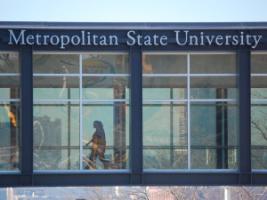Faculty blasts proposed ‘Soviet-style’ changes in MnSCU management
- Article by: MAURA LERNER , Star Tribune
- Updated: September 30, 2013 – 12:51 PM
‘Charting the Future’ plan would hurt quality, MnSCU faculty says. Administration said it would not centralize colleges and universities system
A faculty group is denouncing a proposal to reshape Minnesota’s state colleges and universities, saying it would create “a Soviet-style management structure” that does little to benefit students.
“This is going to lower the quality of their education, and not do anything significant to reduce student debt or make tuition more affordable,” said Monte Bute, a sociology professor at Metro State University.
The proposal, “Charting the Future,” which was released in June as a draft report, calls for sweeping changes at the Minnesota State Colleges and Universities system (MnSCU), which has some 430,000 students at 54 campuses.
Among other things, the plan encourages more coordination among the campuses, and suggests that some campuses and programs may be merged.
On Monday, the Inter Faculty Organization, which represents 4,000 faculty members at seven Minnesota state universities, released a scathing critique of the proposal.
“We oppose moving toward a Soviet-style management structure with centrally controlled decisionmaking by bureaucrats who are far removed from the classroom,” the faculty union said.
Administration officials dispute the criticism.
“The draft recommendations neither suggest nor should lead to more centralization or a larger system office,” said Michael Dougherty, a vice chancellor at MnSCU.
Nancy Black, the union president, said faculty members were caught off-guard when the draft report was released in June, after classes had ended. It wasn’t until last week, she said, that the union’s board was able to meet and hammer out its response.
The key criticisms: It could squeeze out “innovation” at the various colleges and universities and allow the business community to dictate academic programs, possibly at the expense of the liberal arts. “Student program choices should not be limited to the programs supported by the business community,” the group said.
The proposal has yet to be approved by the board of trustees.
Administrators say they have been seeking feedback on the draft report, and that it won’t be presented to the board until November.
Officials say the draft report was the result of months of discussions by three work groups involving 46 students, faculty members, administrators and others.
But Black, who was one of three faculty members on the work groups, said the report took her by surprise. “We had, what I would term euphemistically, lively discussions,” she said, but her group did not vote on any of the recommendations. She also said she did not see the final draft until it was made public June 19.
Black said the reaction from faculty has been fairly intense. “Let me put it this way: There were enough faculty around that were sufficiently enraged at me for being a part of it,” she said.
The faculty union also said the proposal would “have the effect of union busting,” because it suggests merging collective bargaining units.
Said Bute: “What we’re requesting is that the chancellor and the board of trustees look carefully at this, basically hit the delete button [and] go back to the drawing board.”
Maura Lerner • 612-673-7384




